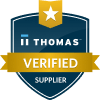Foam is produced when gas (e.g., air) is added and becomes stabilized within a liquid (often water) containing impurities and surface-active agents (surfactants). The molecules of surfactants form a film that traps gas bubbles, preventing them from dissipating as they would in a pure liquid. Whether the foam produced rises to the surface (macrofoam) or accumulates throughout the liquid solution (microfoam), it can cause product or process quality issues in many industrial applications.
Defoaming and antifoaming agents are compounds that are designed to minimize or mitigate foam production. They are used to destroy foam buildup and/or prevent foam formation. One of the industries that regularly relies on them is the food and beverage industry.
Operations that create or process consumable goods have the potential to produce foam at multiple stages of production. Fatty acids, proteins, sugars, and other surface-active substances are often the culprits, as are production processes like fermenting, distilling, deep-frying or -freezing, conserving, and washing. When foam builds up, spills, or requires disposal, it can cause disruptive problems ranging from slowed equipment and inefficient processes to diminished product quality and worker safety.
Importance of Food-Grade Antifoams and Defoamers
Generating foam is important for several food and beverage production and processing operations. The foaming process is impacted by such properties as viscosity, ionic strength, and surface tension. However, foam formation can have negative effects on other operational processes within the sector. Foam buildup can result in product quality issues and defects. It can also cause equipment to malfunction and overflow or prevent it from properly filling containers with product. Ultimately, foam can slow processing times, stall production completely, or even make a working environment unsafe.
Reducing and stabilizing foam can be a complex endeavor, requiring well-chosen defoaming agents and efficient control. For example, surface layers of gelatinous substances as well as film elasticity affect persistent foam stability. Food-grade antifoams and defoamers allow manufacturers to prevent or safely eliminate foam in food and beverage operations. Multiple natural oils, esters, chemicals, and related agents can effectively decrease foam volume.
Antifoam and defoaming agents are beneficial for:
- Enhancing equipment performance. Reducing foam decreases the risk that your equipment will experience a foam-related shutdown or malfunction, which also optimizes process efficiency.
- Improving product quality. Foam can result in contaminated products or consumables of subpar quality. Eliminating foam or preventing its occurrence will boost the acceptance rate of food and beverage products.
- Reducing waste. Having fewer defects and quality issues also equates to reduced waste generation from product loss.
- Decreasing costs. Maintaining product integrity and minimizing waste combine to decrease operational costs.
Defoamers are universally surface-active substances, most of which are also insoluble. For those that are water soluble, they operate on the principle of inverse solubility, meaning that in an aqueous system using a defoamer, solubility decreases as the system’s temperature rises. Once the system reaches its initial effective temperature, also known as the cloud point, the defoaming agent separates from solution and reduces the foam. The defoamer will become soluble once again after the temperature of the system drops below the cloud point.
Applications of Food-Grade Defoamers
Food-grade antifoams and defoamers find application in various food and beverage processing operations, including, but not limited to, the following:
- Processing meat, poultry, and seafood products using procedures like defeathering, washing, rendering, basting, and marinating
- Processing and producing dairy products like whey, cheese, reconstituted milk, heavy cream, coffee creamer, ice cream, and pudding
- Transporting, washing, and preparing fruits and vegetables
- Producing sugary products such as gelatin, jelly, jam, maple syrup, candy, and icing
- Milling and processing grains, corn, and soy protein isolates
- Creating flavoring and spices for everything from coffees to marinades to popsicles
- Manufacturing and processing brine solutions
- Fermentations, including yeasts, bacteria, enzymes, amino acids, and ethanol
- Distilling alcoholic drinks
Food-Grade Defoamers and Antifoams From AMS
At Applied Material Solutions (AMS), we offer our food and beverage clients a wide range of defoamer and antifoam options to suit their individual needs. Our product line includes:
- Silicone defoamers/antifoams. Silicone-based defoamer and antifoam products couple inorganic silicates with hydrophobic silicone polymers to manage foam production. Being organoleptically imperceptible, these inert agents are ideal for food and beverage applications because they won’t impact a product’s taste or smell. Our water-based and non-aqueous defoamer and antifoam solutions are anywhere from 10 to 100% active, as well as kosher- or Passover-certified.
- Non-silicone defoamers/antifoams. Consisting of substances like mineral and vegetable oils, synthetic polymers, natural waxes, silicates and esters, non-silicone defoamers and antifoams often contain additional surfactants designed to enhance water dispersibility. At AMS, we offer aqueous and non-aqueous options as well as organic defoamers and antifoams to facilitate organic food production and processing.
- Powdered antifoams. This antifoam variety is applicable for use with powdered goods to prevent such products from developing foam when in contact with water.
To discuss your antifoam/defoamer needs with one of our team members, contact us today.



